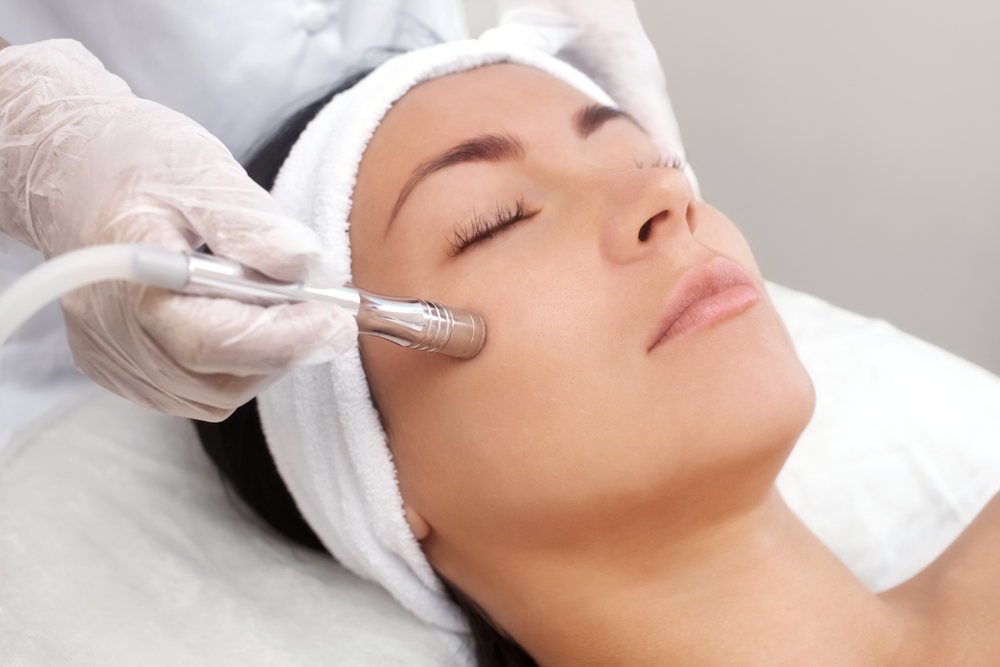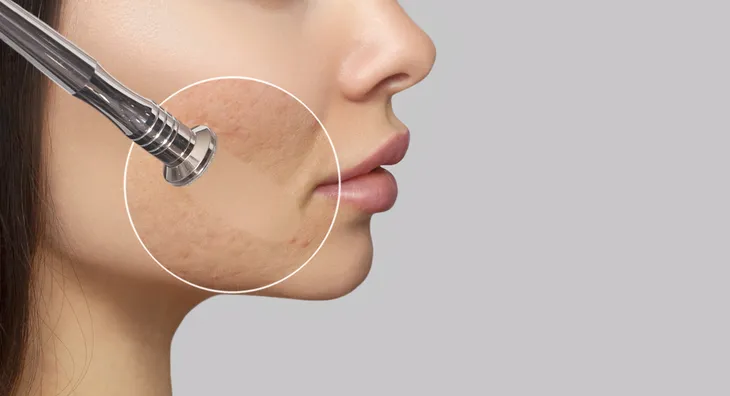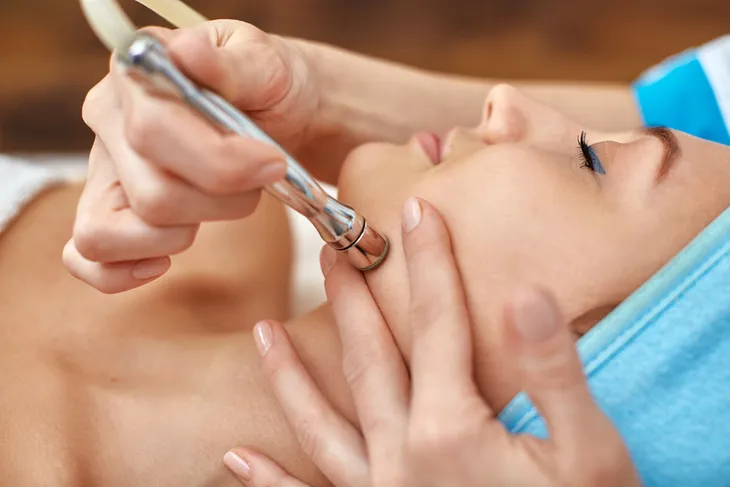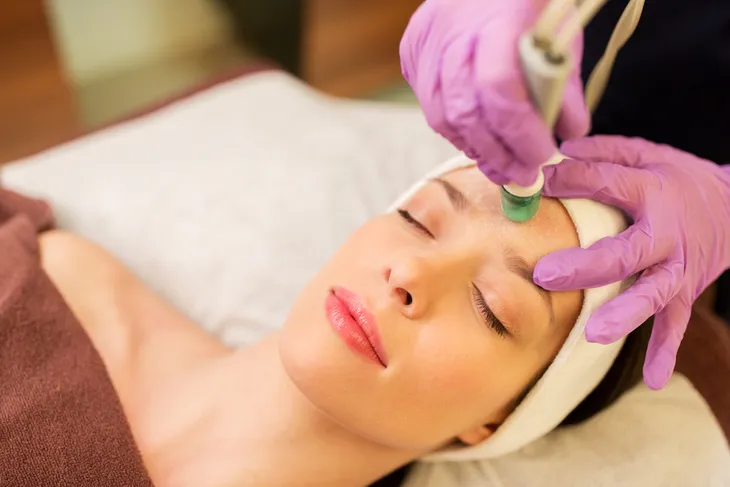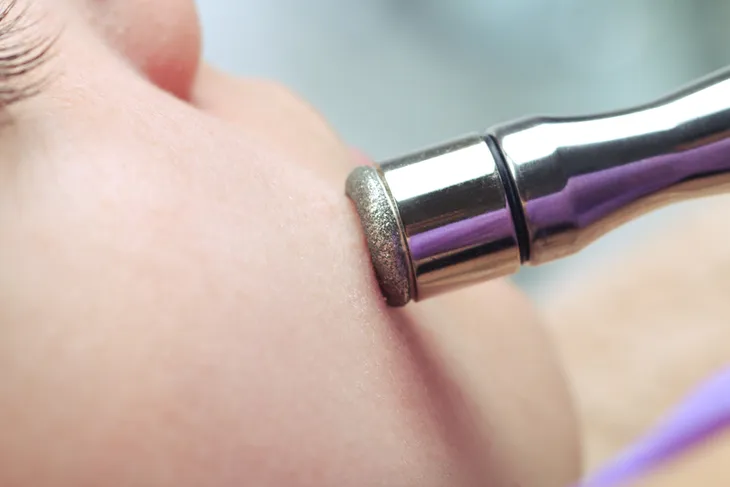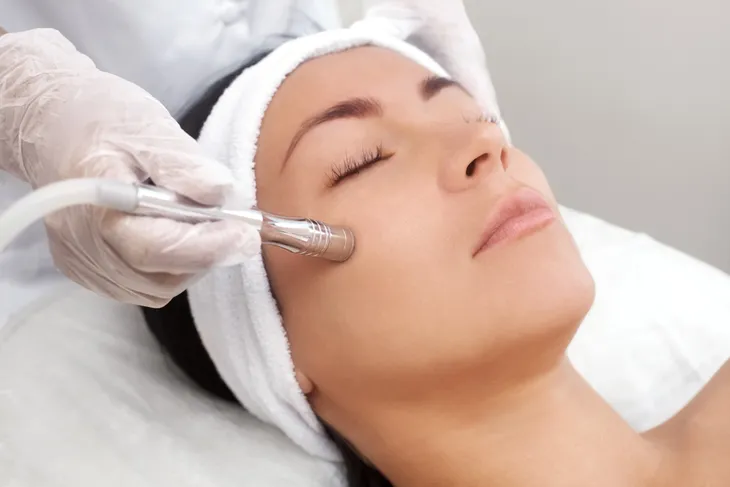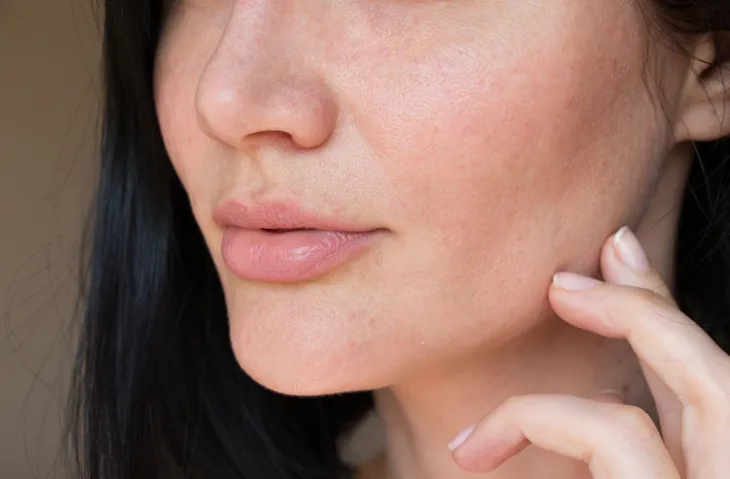Glowing, smooth skin is everyone’s goal but it can take quite a few products and healthy lifestyle habits to achieve it. While everyday skincare products and exfoliation can help, there are a few procedures available that can professionally renew the skin and combat common skin concerns.
Microdermabrasion has grown significantly in popularity in recent years, and for good reason! It is a procedure that is minimally invasive but has big results in rejuvenating a radiant, healthy glow to the skin. If you’re considering microdermabrasion, follow along as we break down everything you need to know as well as a few pros and cons of the procedure.
What is Microdermabrasion?
According to Healthline, microdermabrasion is a non-invasive procedure that works to renew skin texture and tone. The procedure uses an abrasive instrument to exfoliate the thick outer layer of skin and sand away dead skin cells to reveal fresh, radiant skin underneath.
This procedure can address many skin concerns such as fine lines, sun damage, dark spots, acne scarring, enlarged pores, and melasma. Microdermabrasion is considered a safe treatment for most skin types and colors.
Types of Microdermabrasion
- Crystal: Microdermabrasion using crystals is the most commonly used form of treatment. This technique uses pressure and small crystals to remove dead skin cells and scar tissue.
- Diamond: Diamond microdermabrasion is another popular form of treatment that uses a single diamond tip to scrape away and suction dead skin cells.
- At-Home: Another option to achieve the results of microdermabrasion is to use an at-home kit. While the results will likely not be as effective as a professional treatment, you will notice a difference after multiple treatments.
How Does Crystal Microdermabrasion Work?
Crystal microdermabrasion, also known as microcrystal dermabrasion, is the most popular form of microdermabrasion. According to Brydie, the microdermabrasion instrument will use “gentle vaccine pressure to spray crystals along the skin, and through gentle horizontal and vertical swipes of the handpiece, the crystals rub on the epidermal layer of the skin, exfoliating the dead skin cells off.”
The crystals and exfoliated skin are simultaneously sucked away through a vacuum-like movement from the same device. According to VeryWellHealth, aluminum oxide (corundum) crystals are the most commonly used type of crystal, but sometimes magnesium oxide, sodium bicarbonate (baking soda), and even sodium chloride (salt) crystals are used.
How Does Diamond Microdermabrasion Work?
Diamond microdermabrasion is another form of treatment that has grown in popularity in recent years. This method uses a tool with a diamond-encrusted tip to pass over and exfoliate the skin.
Similar to the crystal method, the tool will simultaneously vacuum away the dead skin cells. This method is slightly cleaner than the crystal method since it doesn’t leave behind any residue and works especially well for sensitive areas like the eyes.
Weighing The Pros & Cons Of Microdermabrasion
Pro: Easy and Affordable
The biggest pro to microdermabrasion is that the process is one of the most simple and safe skin treatments. Patients can achieve quick results with a few sessions of a professional treatment or gradual results with an at-home kit. Microdermabrasion is also quite affordable with spa treatments costing around $75 and at-home kits costing around $200.
Con: Requires Multiple Appointments and Won’t Reduce Wrinkles
A con to microdermabrasion is that it may require multiple appointments to see the full result. Noticeable changes require multiple sessions over a long period of time. Patients should also know that while microdermabrasion may reduce tiny surface wrinkles, it isn’t the most effective procedure to smooth deep wrinkles or signs of aging.
Pro: Quick Procedure with No Recovery Time
Another major pro to microdermabrasion is that the treatment itself is quite quick, with some of the lengthiest appointments taking no more than 30-minutes. Patients can also expect there to be little to no recovery time or side effects following a treatment session.
Con: May Leave Skin Sensitive or Dry
A con that patients should be aware of is that microdermabrasion can leave the skin more sensitive or dry following treatment. It’s recommended that patients should keep the skin moisturized and stay out of direct exposure to the sun for several days following their appointment.
Is Microdermabrasion Right for You?
Overall, it’s important to weigh the pros and cons when deciding if microdermabrasion is right for you. If you’re looking for deep exfoliation with minimal cost and recovery time, it could be worth a try. If you’re looking for the treatment of deep wrinkles and are looking for immediate results, you may want to try a different course of treatment. Be sure to always consult a professional before making the decision on whether microdermabrasion is right for you and your skin type.
